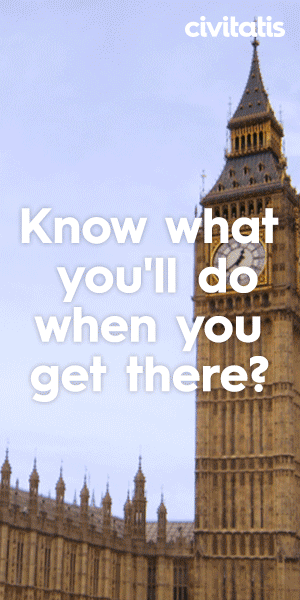Shah Mosque is also known as the Abbasi Great Mosque. It’s part of the UNESCO listed Naghsh-e Jahan Square in Isfahan.
No trip to Isfahan in Iran would be complete without visiting Naghsh-e Jahan Square and the grand old Shah Mosque. Here’s what I saw when I visited Shah Mosque and what you should look for when visiting.
Visiting Shah Mosque in Isfahan Iran
Shah Mosque | Abbasi Great Mosque | Naghsh-e Jahan Square
Shah Mosque or the Abbasi Great Mosque as its also known is part of the UNESCO listed Naghsh-e Jahan Square in Isfahan. The square was built during the Safavid dynasty under Shah Abbas I in the early 16th century.
Shah Abbas I moved the capital of Iran to Isfahan from Qazvin. His primary considerations were distancing the Persian capital from the Ottoman empire and centralising his power. The capital of Persia, now Iran, remained Isfahan until Karim Kahn once again moved the capital. This time to Shiraz during the Zand dynasty in the mid 17th century.
Naghsh-e Jahan Square in Isfahan was envisioned to unite the power of the clergy, merchant traders and the Shah as monarch. Naghsh-e Jahan Square also housed foreign diplomats and dignitaries and was designed to centralise power. Not only to distance the capital from the Ottomans or move closer to the Persian Gulf.
Shah Mosque History and Location
As part of the construction of Naghsh-e Jahan Square the Shah Mosque as it’s more commonly known, was built as the royal mosque. Its construction took almost two decades and it was built between 1611 and 1629.
The mosque is designed to face Mecca. Hence the mosque is offset from it’s deep entry portal on the rectangular Naghsh-e Jahan Square. Moving through the entry portal and past the basin that has stood for centuries and once presented refreshments for worshipers during Friday prayers, one exits the portal to a huge courtyard.
The courtyard features seven colour mosaics and calligraphic inscriptions that reached their height during the Safavid dynasty. Designed and built under Sheikh Baha’i who interpreted the plan of Shah Abbas, the royal mosque became the seat of the clergy’s power in Persia.
The larger Naghsh-e Jahan Square was envisioned to bring together the power of the clergy, merchants and the Shah. To this end, the Shah Mosque or Abbasi great mosque became the seat of the clergy’s power in Iran during the later half of the Safavid dynasty.
I found its location at the head of the square interesting. And more so taking into consideration the location of Aali Qapu Palace. The Shah Mosque lies to the right of Aali Qapu Palace and within direct line of sight. It seemed to me looking down from the balcony of Aali Qapu Palace that the clergy were the Shah’s right hand and the merchants his left.







Shah Mosque Scale
From the outside at ground level the sheer scale of the Shah mosque is barely noticeable. At least I couldn’t guess just how big and grand the site actually was. As we entered from Naqsh-e Jahan Square the site seemed small. Or at least the same size as most other mosques I’d visited in Iran.
But as we came to the end of the internal entry portal and exited onto the central courtyard of Shah Mosque it became immediately apparent just how large and architecturally unique the site actually is. The arched doorways and dome are massive. The average person is a minnow dwarfed by such huge arches. I was awestruck at the sheer scale of the site.
As I approached any of the four main archways inside the complex I felt as if I was walking in a house of giants. I was barely as tall as the lower stone layer. A layer that looked to me like a skirting board on western homes doorway. The arch towering above me 10 or more times my height.
The interior dimensions and sheer scale of the Shah Mosque do make you question religion. They make you feel as though you’ve entered God’s house.
In the video I took below, notice the size of the 6ft gentleman entering through the main arch at the start.
Abbasi Great Mosque | Acoustic Properties
The Mosque and dome are designed to reflect sound. From the central stone under the main dome the acoustic properties of the design amplify the slightest whisper. The main dome was design so as to allow the Imam to speak in a natural tone and at normal level and be heard by everyone in the Mosque.
A voice at normal level and in natural tone will be reflected outward and be amplified. From the central stone marking the point from which the Imam conducts his khutbah a pin dropping could be heard across the great room.
I found the acoustic properties of the room both fascinating and awe inspiring. Centuries before acoustic tools used to calibrate sound the architects of the Shah Mosque had perfectly calibrated the room they were building to reflect and refract sound.
To give you an idea of how far the sound reflects or refracts check out the images below. There’s a person standing on the Imam’s central stone from which khutbah is given. Notice how small they look and yet, I could hear them like they were standing next to me.





Conclusion | Travel tips
For sheer size and scale the Abbasi Great Mosque or Shah Mosque as its called, is one of the most impressive structures I witnessed in Iran. The internal scale of the Shah Mosque makes you immediately feel small on entry. And its acoustic properties were fascinating.
I did find the geometric patterns and seven colour mosaic tiles with calligraphic inscriptions interesting. But it was hard to focus on the tiles when presented with a site of such scale. I personally found most of my attention drawn by the size of the arches, height of the mosques dome and the acoustic properties.
When visiting the site you should ensure that you’re respectful at all times. While there is a note on the central stone that only islamic songs may be sung to test the acoustics I do personally feel this shouldn’t need to be said. Shah Mosque is a religious site and a place of worship so do at all times be respectful. And you absolutely should visit Shah Mosque while in Isfahan.
Liked this article? Subscribe to the blog below and check out our other travel articles on Iran.
Bonus images of the abbasi great mosque مسجد شاه





















